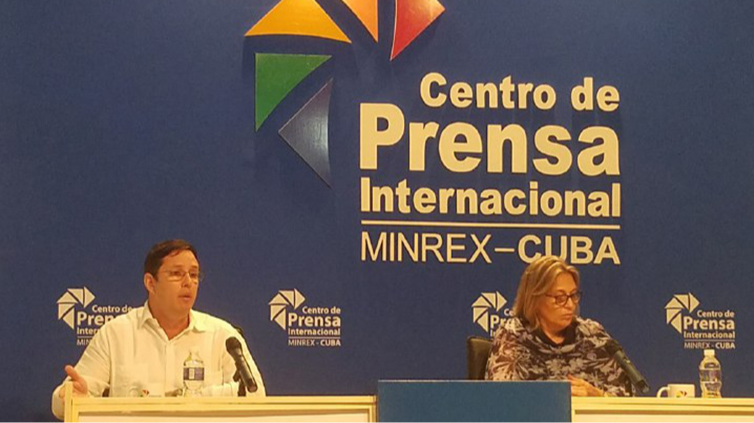
Diaz Rodriguez explained that the aim is to attract foreign investment and make business more flexible. Photo: Ana Margarita González
Havana, Feb 8 (RHC) During a press conference on Tuesday, Cuba announced the projects that make up the Portfolio of Opportunities for Foreign Investment in the agricultural sector in 2023.
There are 59 investment opportunities, two more than the existing ones.
The director of International Relations of the Ministry of Agriculture, Orlando Diaz Rodriguez said that they are an extension of the portfolio presented by the country during the International Fair in Havana, last November.
He explained that they intend to attract foreign investment and make it more flexible, given the multiple benefits they bring to the national economy.
The official pointed out that the offer includes three proposals in which the agricultural cooperatives act as partners in businesses of production and commercialization of pork, chicken, milk, and others, aimed at local development.
The most abundant proposals come from Livestock, Agroforestry, and Agricultural groups, and cover a wide range of their usual productions.
He said that the opportunities include traditional agricultural and forestry exports such as charcoal, honey, cocoa, and coffee, while the Flora y Fauna Business Group promotes nature tourism, an excellent option that includes natural parks, edible mushrooms, and cassava flour.
Díaz Rodríguez gave an overview of the development of investments in agriculture: Cuba has an experienced, qualified labor force and research centers that provide scientific answers to the most pressing production problems.
Sixteen percent of Cuba's land remains idle, which could be attractive to foreign investors seeking to establish partnerships from scratch.
The agricultural sector faces the great challenge of supplying a population of more than 11 million inhabitants, where 80% live in the cities, which makes it essential to increase production, reduce imports and create more exportable funds.
It is also unavoidable to reduce the gap that exists between the countryside and the city, for which it is necessary to create better living conditions, not only in housing and infrastructure but also in the possibility of the use of technology, commercialization, and access to the food and consumer goods market. (Source: ACN).

